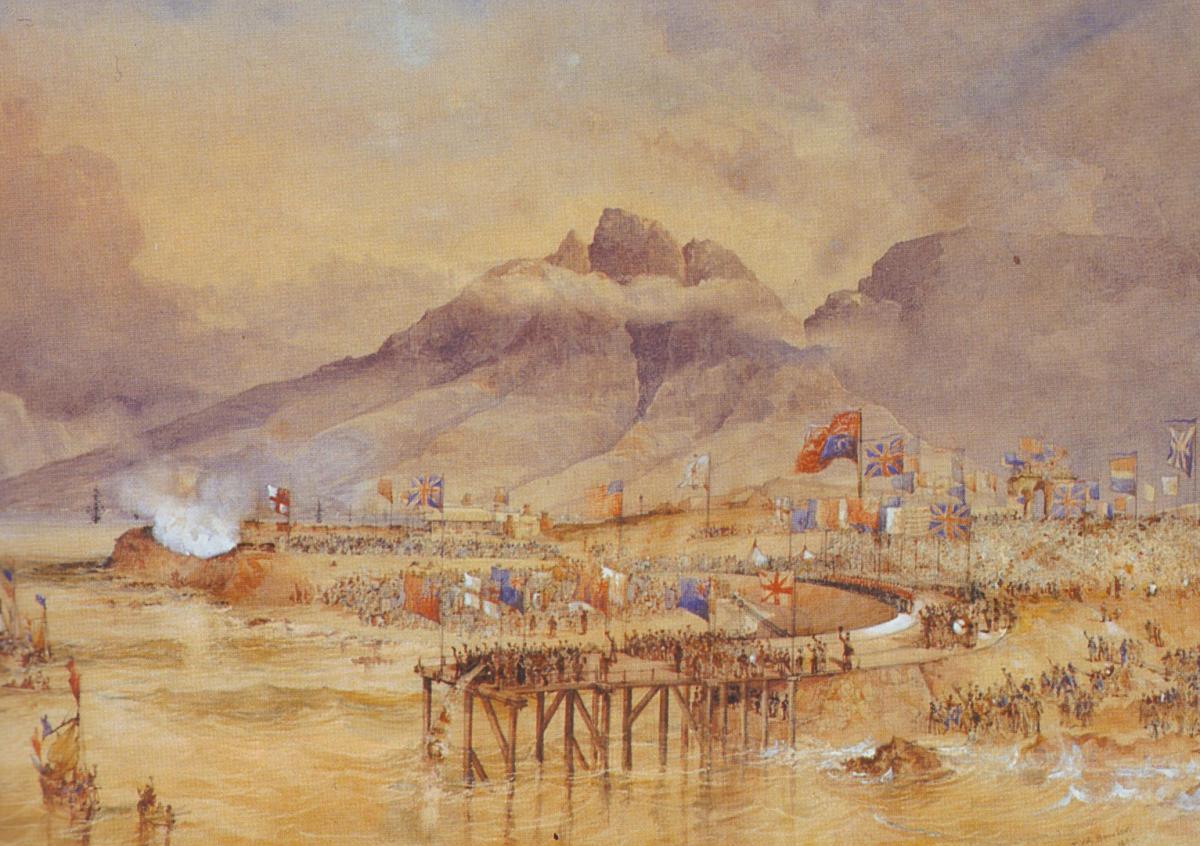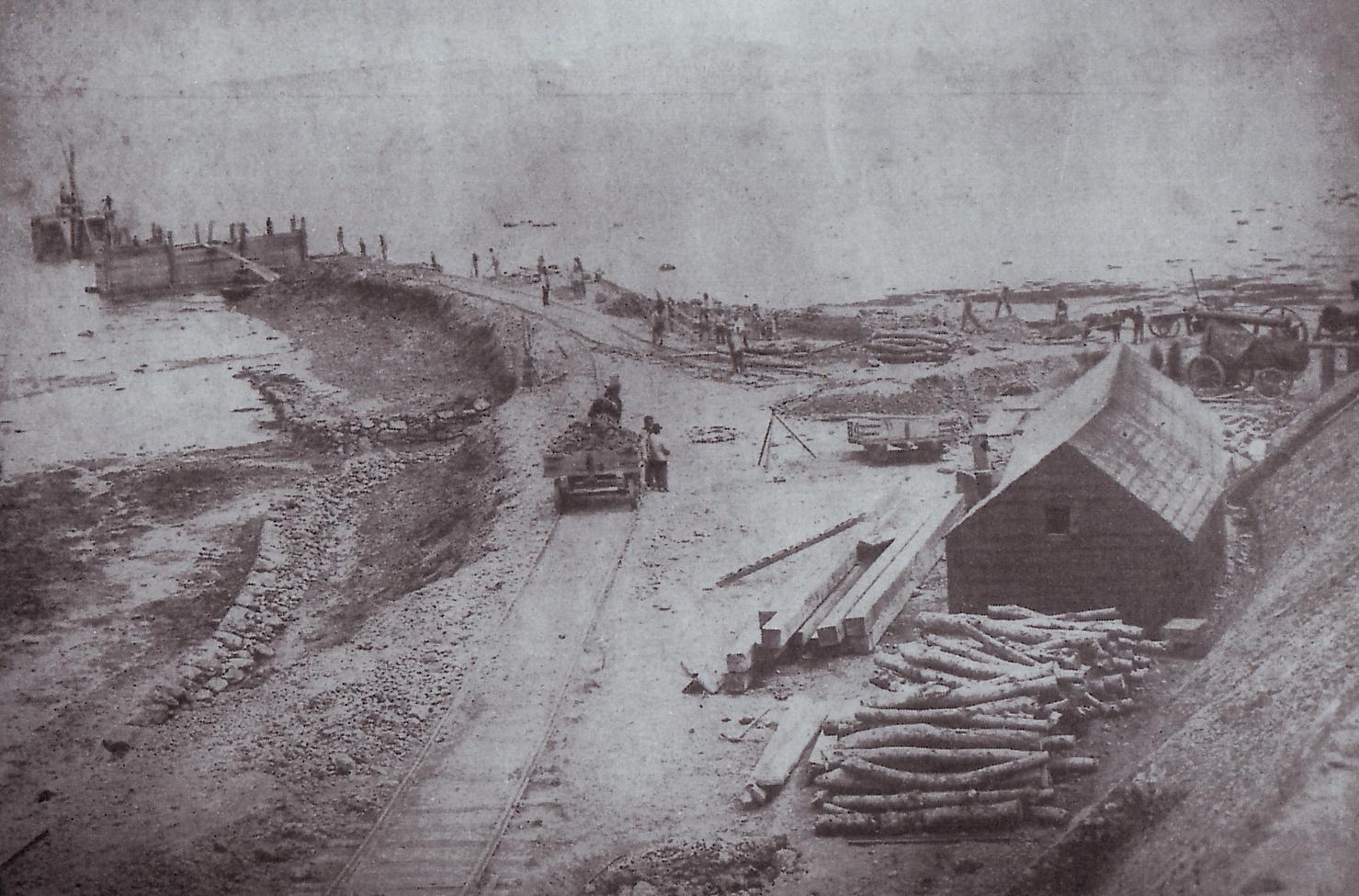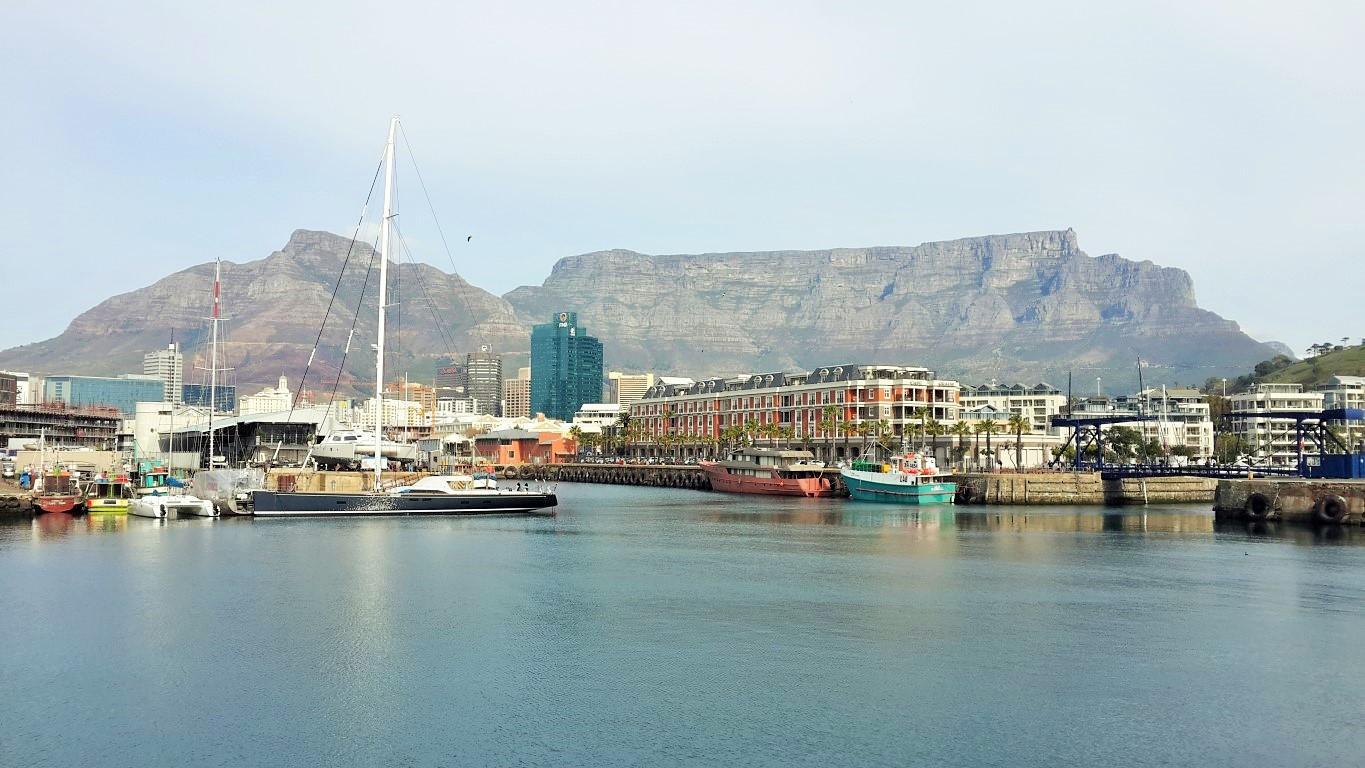
Disclaimer: Any views expressed by individuals and organisations are their own and do not in any way represent the views of The Heritage Portal. If you find any mistakes or historical inaccuracies, please contact the editor.
Several engineers have had a lasting influence on the shape and well-being of Cape Town – one thinks of Tom Stewart, David Lloyd-Davies, Ninham Shand and Solly Morris – but few made such an impact as Sir John Coode. It was his plan for the progressive development of the Table Bay harbour complex which eventually led to the reclamation of the foreshore and thus gave the city a new lease on life by doubling the effective area of the CBD. Coode also made a huge contribution to the development of the harbours at East London and Durban and had a hand in the design of most other South African ports.
Coode was born in Bodmin Cornwall in 1816, and became a pupil of a well-known harbour engineer, James Walker. At the time artificial harbours were virtually unknown, as most ports were situated in river mouths or coves. At this early stage of his career Coode attracted attention by personally developing and using diving apparatus to investigate underwater conditions for breakwater design. After qualifying he joined the practice of another famous harbour pioneer, James Rendel, and was appointed as Resident Engineer for the huge Portland Harbour project south of Weymouth, Dorset, which is still one of the largest expanses of water in the world enclosed by breakwaters. When Rendel died in 1856 Coode was appointed Engineer-in-Chief, and within a few years he was recognised as the leading authority on artificial harbours. The project took 23 years to complete, after which Coode was knighted for his services.
Sir John Coode
The first president of the South African Institute of Civil Engineering (SAICE), John Brown, served his pupillage under Coode on the Portland Harbour works but we do not know whether this connection led him to South Africa.
In the 1850's South Africa was gradually emerging from its pre-colonial backwardness. Charles Cornwallis Michell and John Montagu had – literally – paved the way with their roads and passes. Now with a new representative government and a progressive Governor in Sir George Grey thoughts turned to railways and harbours.
The roadstead in Table Bay had always been treacherous; with the increase in trade, the threat of further disasters was ever prevalent. More practically perhaps, the age of steam had arrived and the Cape had become an important coaling station, but refuelling by means of jetties and lighters was slow, dirty and inefficient. Under British rule individuals and groups began campaigning for a safe and practical harbour, and eventually the authorities realised that the public had a sound case. A well-known engineer, Capt. James Vetch, drew up preliminary plans, but the proposals were regarded as too expensive. Whitehall then turned to the acknowledged expert, Coode, who produced a scheme which could be implemented within an affordable annual expenditure. He conceived the idea of a breakwater into the bay from the site of the Chavonnes Battery, which would protect an inner dock and thereafter an outer basin. It was still an expensive plan for a cash-strapped Colony, but the Cape politicians were ready to approve it.
Cape Town Breakwater construction
Opposition came from the representatives of the Eastern Cape, who, with some justification, believed that too much of the fragile colonial budget was spent on Cape Town. It was only when Grey proposed that Prince Alfred, eldest son of the Queen should launch the scheme that Victorian and Empire loyalty overcame local prejudice, and the vote was passed.
Prince Alfred
The works for the Alfred Basin began in 1860 with due pomp and ceremony, and the first load for the breakwater was tipped by the young prince (see main image). The works were without doubt the most extensive and technically difficult ever undertaken in the colony. Blasting techniques, diving machines, cranes and steam machinery were employed for the first time, and a broad gauge railway was laid to carry stone to the breakwater. The Robinson Dry Dock, one of the best facilities of its kind in the world at the time, was added in 1882.
A modern view of the Alfred Basin (The Heritage Portal)
Coode visited the Colony several times to check progress and to keep in touch with his Chief Resident Engineer, Thomas Andrews. Whatever the actual cost, the outcome was soon justified. After the docks were officially opened in 1870 – again by Prince Alfred, by now Duke of Edinburgh – the wharves were soon filled with shipping, and Cape Town became a port of preference. Coode was forthwith commissioned to extend the breakwater and proceed with the larger Victoria Basin. These works took place between 1883 and 1893, by which stage Cape Town had a sizable and viable terminal for the growing overseas trade. But Coode foresaw that more wharfage would be necessary, and he had ideas for a large basin south of his existing works. These were implemented after his death in 1892, and in time the giant Duncan Dock was built as an extension to his original concept.
Meanwhile it had become time for the Eastern Cape to get its fair share of development capital. With the improvement in local finances through the discovery of diamonds, and the consequent increase in trade, Coode was appointed in 1870 to report on all ports and harbours in the Colony. He duly planned improvements to the facilities at Port Alfred, Knysna and Mossel Bay. For Port Elizabeth he designed the North and South jetties and a retaining wall to train the Baakens River and improve scour. These were constructed between 1876 and 1881.
Anchorage in the Buffalo River at East London was hindered, in common with most South African rivers, by a sand bar across the mouth. Before Coode arrived in 1870 some work on a breakwater had been done by Woodford Pilkington, the Assistant Colonial Engineer. Coode continued with this and also built training walls along the river banks to improve the river current, which would then scour out the channel. It took twelve years to establish a navigable channel, by which time wharfs had also been built to improve landing arrangements. When Coode visited the works in 1881 the value of imports had risen from £21,000 in 1869 to £2,115,000. Improvements continued, but the greatest impact was made when Coode recommended that a suction dredger be acquired. The Lucy, acquired in 1886, deepened the river channel and kept the sand bar open, and proved the final factor in making East London an important port.
East London harbourworks 1859
Durban Harbour also had difficulties with a sand bar, but here there was an additional problem – interfering politicians. The first efforts to control the sand bar were made by John Milne, a Scottish engineer who accepted the position of Harbour Master in 1852. He planned to narrow the mouth of the bay by building breakwaters from the Point and the Bluff. Work started on the North Pier, but Lieutenant-Governor Scott, who fancied himself as an engineer, decided that Milne’s scheme was flawed and dismissed him. For seventeen years Scott fiddled around with his own plans and built two useless piers, wasting some £100,000 of public money without making any improvement to the harbour. A Board of Enquiry was then appointed under the chairmanship of politician Harry Escombe, which accomplished very little. But Escombe realised that a viable harbour would really put Durban on the map, and he became the champion of a drive to sort out the problems at the mouth of the bay. He went back to John Milne, now seventy four years old, to help him with his vision.
At this stage, in 1871, Coode was appointed by the Colonial Office to investigate a solution. His first plan did not find favour with Milne. There was a long and bitter controversy culminating in Coode producing a second, more elaborate plan in 1877. This one was not acceptable to Escombe, who was by now a member of the Legislative Assembly and was also beginning to set himself up as a harbour design expert and coastal engineer. Coode’s plan was supported by the Colonial Office, and again there was debate, dithering and deadlock. Eventually Coode decided he had had enough, and he withdrew from the scheme.
A new engineer, Cathcart Methven was appointed, and after further delays and interference he implemented what was in effect Coode’s scheme. After more than fifty years of controversy, Durban could at last take its place among the great ports of the world.
Coode’s colonial works were not limited to South Africa, and he is acclaimed for the harbours at Melbourne, Freemantle and, what is generally considered his masterpiece, at Columbo. As President of the ICE he promoted the notion that young British engineers would best gain experience by service in the colonies, and this may well have influenced a number of engineers to come to South Africa and eventually to settle here. Although he may not have been resident in South Africa we can only agree that his impact on this country was huge and permanent.
Tony Murray is a retired civil engineer who has developed an interest in local engineering history. He spent most of his career with the Divisional Council of the Cape and its successors, and ended in charge of the Engineering Department of the Cape Metropolitan Council. He has written extensively on various aspects of his profession, and became the first chairman of the History and Heritage Panel of the South African Institution of Civil Engineering. Among other achievements he was responsible for persuading the American Society of Civil Engineers to award International Engineering Heritage Landmark status to the Woodhead dam on Table Mountain and the Lighthouse at Cape Agulhas. After serving for 10 years on SAICE Executive Board, in 2010 he received the rare honour of being made an Honorary Fellow of the Institution. Tony has written manuals, prepared lectures and developed extensive PowerPoint presentations on ways in which the relationship between municipal councillors and engineers can be more effective, and he has presented the course around the country. He has been a popular lecturer at UCT Summer School and has presented five series of talks about engineers and their achievements. He was President of the Owl Club in 2011. His book "Ninham Shand – the Man, the Practice", the story of the well-known consulting engineer and the company he founded, was published in 2010. In 2015 “Megastructures and Masterminds”, stories of some South African civil engineers and their achievements was written for the general public and appeared on the shelves of good bookstores. “Past Masters” a collection of his articles about 19th century South African Engineers is also available from the SAICE Bookshop.
Comments will load below. If for any reason none appear click here for some troubleshooting tips. If you would like to post a comment and need instructions click here.


